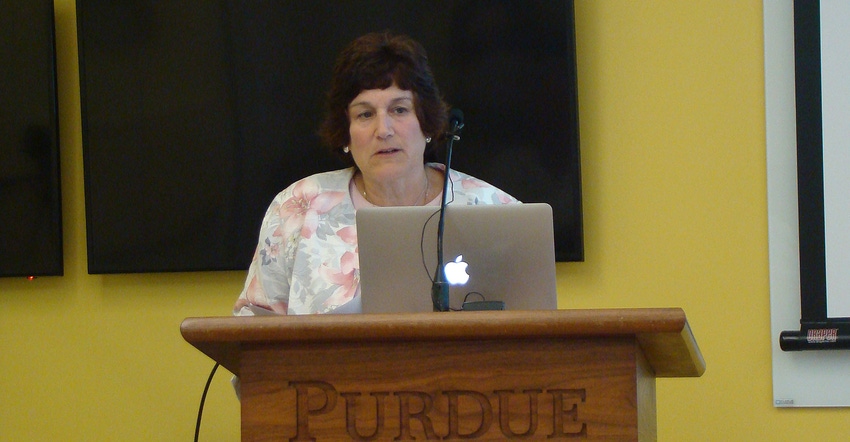August 29, 2018

Is Indiana agriculture doomed by predictions of changing climate patterns? Not necessarily, experts say. Despite rather dire projections, there are reasons to be hopeful about the future for producers who are willing to adapt.
That’s the consensus from a report on climate change issued recently by Purdue University’s College of Agriculture. The report was presented by a panel that included former Purdue Dean of Agriculture Jay Akridge; current ag Dean Karen Plaut, Jeff Dukes, Purdue Climate Change Research Center director and a forestry professor; and Laura Bowling, the report author and an agronomy professor. The report represented the work of more than 90 Purdue professors from various disciplines working on climate change
However, the report stresses that farming is a competitive business, and that a business-as-usual approach will not serve farmers well in the coming decades.
Changing one’s management practices to adapt to changing conditions will be key, and projected problems resulting from climate change have a suggested antidote of sorts, the experts note.
Warmer overnight temperatures could be countered by earlier planting, or using varieties that more quickly reach maturity to avoid heat stress during pollination. Improving soil health with management practices that increase soil stability and water movement can help with managing additional spring rainfall, as can installing additional drainage. If the quality of grass forages decreases, producers can switch to legumes, which are more heat-tolerant — and so on.
Address possible shifts
In some cases, there may actually be potential advantages to some changes. Although variability in weather patterns will bring challenges, in years where spring rain is less than normal, crops could be planted much earlier. In some parts of the state, double cropping will become more common and more profitable, the report says.
Biotechnology can also help and already has. Although the actual yield potential has declined due to climate change, that effect has essentially been masked by newer and better seed varieties, producing an improvement in annual average corn yields of about 1.5 bushels per year. And future plant varieties can be specifically bred to compensate for changes in climate.
“You’re sitting in the Indiana Corn and Soybean Innovation Center, and part of the purpose for this facility is to be able to integrate information about the environment and weather with genetic information in a way that’s never been done before to address the issues we face,” says Plaut, who addressed the audience assembled to hear the report at the ICSIC, located at Purdue’s Agronomic Research and Education Center.
Bowling summarized by saying that some of the risks facing Indiana agriculture have the potential for substantial impact, and that producers need to be vigilant.
“We know that Indiana agriculture is very adaptive to change,” Bowling says. “The ways we’re doing production now are not the same as a generation ago and will not be the same a generation in the future. We hope by making this information available, we can start to plan for this change. I expect that Indiana agriculture will continue to be very strong for the next century, but it might look different.”
For a more thorough analysis, readers are encouraged to view the reader-friendly report in its entirety at their website.
Boone writes from Wabash, Ind. Tom J. Bechman contributed to this story.
About the Author(s)
You May Also Like






